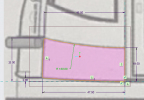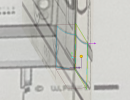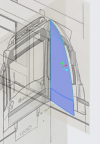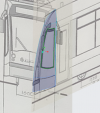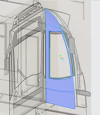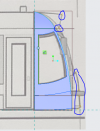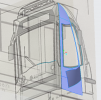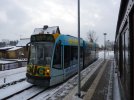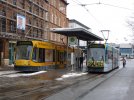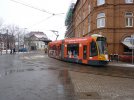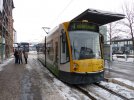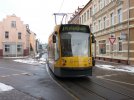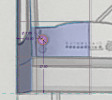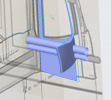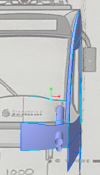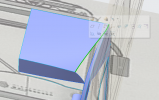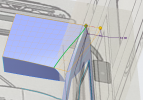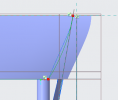Hi stars if the 3D world, I have been for some time thinking that I would very much like a Harz Nordhausen Combino Duo Tram for my line in G scale. There is the North Pilton Flexicity that oerhaps could be modified but I fele that there would be an awful lot of filling and hacking to get this to look like a Harz Combino.

 www.northpiltonworks.com
www.northpiltonworks.com
Then there is the 3D one that was found after a listing in one if the 3D links in the Forum. Again this is not quite right but a possibility as a couple of front sections and one of the centre sections could possibly work.

 www.thingiverse.com
www.thingiverse.com
However more searching found the right thing available up to HO as a body only 3D via Shapways. Perfect if the scale could be sorted to 1:22.
EDIT FORGOT THE SHAPWAYS LINK:-

 www.shapeways.com
www.shapeways.com
But here I fell over as I think that there must somewhere be a file that someone within the forum could get at and up to our scale, I am sure that there would be a need within the many Harz guys amongst us. If I could get Drawings to the right scale and an idea of a printer coy that would make a good job I would be happy to liaise and get some sorted at cost plus whatever it costs to post out.
Any helpers for the design and printing Co. please?
Flexity Modular Tram Set
Our modern Flexity Style Tram Set is designed to represent the Bombardier modular tram solution. The three car set includes the power car, pantograph suspended coach and the trailer car with full bi-directional lighting and interior lights. The powerful motor unit includes a tank motor driving throu
 www.northpiltonworks.com
www.northpiltonworks.com
Then there is the 3D one that was found after a listing in one if the 3D links in the Forum. Again this is not quite right but a possibility as a couple of front sections and one of the centre sections could possibly work.
Trambahn Flexity-2 Spur G 1:22 (LGB) by cammon
Modell der Niederflur-Straßenbahnwagen von Bombardier Transportation, in der Ausführung der Basler Verkehrsbetriebe. Die Tramkomposition im Massstab 1:22 entspricht der Kurzversion mit 5 Teilen.Die Druckvorlagen sind relativ kleinteilig (Bausatzsystem) und müssen mit einem geeigneten Kleber...
However more searching found the right thing available up to HO as a body only 3D via Shapways. Perfect if the scale could be sorted to 1:22.
EDIT FORGOT THE SHAPWAYS LINK:-

Nordhausen Combino Duo by atw12 on Shapeways
Check out Nordhausen Combino Duo by atw12 on Shapeways and discover more 3D printed products in Trains.
But here I fell over as I think that there must somewhere be a file that someone within the forum could get at and up to our scale, I am sure that there would be a need within the many Harz guys amongst us. If I could get Drawings to the right scale and an idea of a printer coy that would make a good job I would be happy to liaise and get some sorted at cost plus whatever it costs to post out.
Any helpers for the design and printing Co. please?
Last edited:



